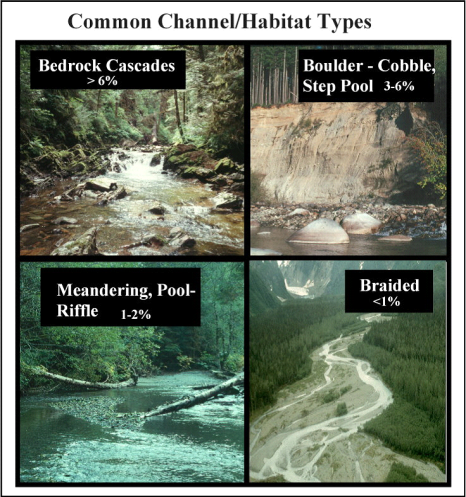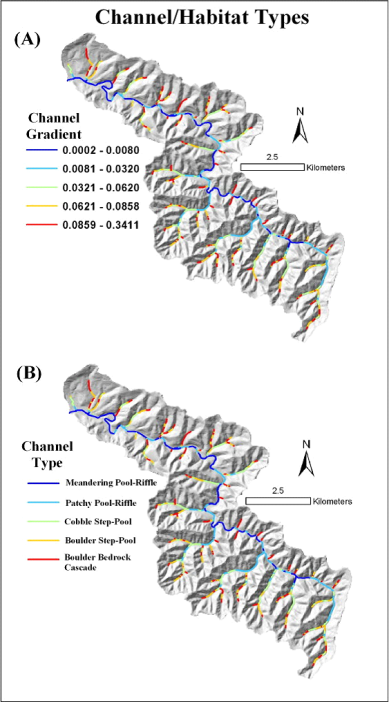NetMap's Watershed Assessment
Watershed Attribute: Channel Classification categories. The default classification is based on channel gradient alone. Other classifications can be specified.
Data Types: Line (stream layer) and polygon.
Field Name: Chclass
Units: Categories
NetMap Level 1 Module/Tool: Fluvial Processes/Channel Classification
Model Description: Channel size and gradient are generally correlated (narrow channels tend to be steeper) (Leopold et al. 1964) so that gradient alone provides a useful measure for delineating channel types. Common channel types include bedrock–boulder cascade, boulder-cobble step pool, meandering pool and riffle, and braided (Figure 1). For example, meandering pool and riffle channels are often located in channels less than 2% gradient. Boulder and cobble floored, step pool channels generally range in gradient from 2 to 4%, and cascade channels are often in excess of 4% (Grant 1990).

Figure 1. NetMap creates maps of channel gradients; channel types can be inferred using existing stream classification systems (e.g., Montgomery and Buffington 1997, Rosgen 1995). Inferring substrate sizes is more difficult because of confounding factors that include lithology, wood accumulations, and disturbance history. Field recognizance (or the use of other databases) is recommended when linking particular channel gradient classes with substrate sizes to the overall environmental context of the channel (i.e., confinement, wood accumulations, and bedrock controls, etc.).
Figure 2. Channel gradient (A) can be a good proxy for different channel types (B), the relationship here shown in a 5th-order basin in the Oregon Coast Range. Other information such as wood accumulation types, valley confinement, near-stream topographic roughness, and erosion potential should also be used to delineate channel types. Use of aerial photography and field surveys is recommended.


